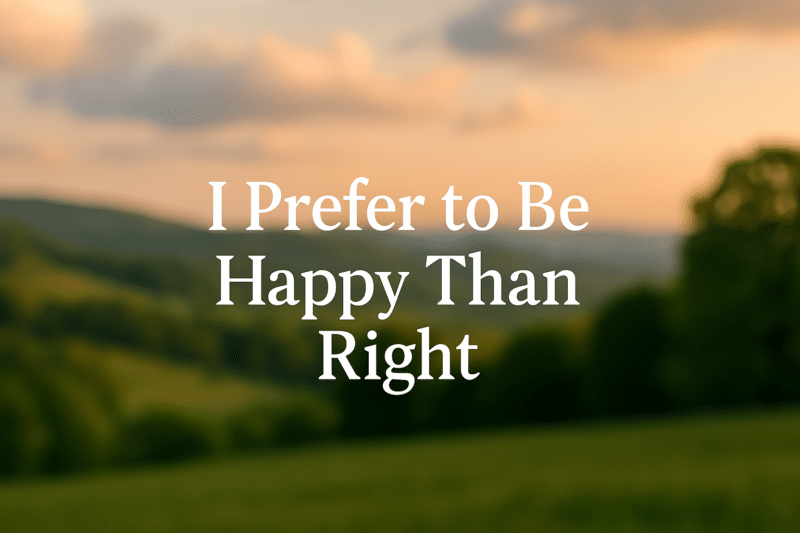 Over the years, I’ve come to realize something that’s quietly changed my life: I prefer to be happy than to be right.
Over the years, I’ve come to realize something that’s quietly changed my life: I prefer to be happy than to be right.
It didn’t happen overnight. I’ve always had a sharp mind and a strong opinion about, well, almost everything. I used to thrive on debate, feeling a surge of satisfaction when I could prove a point or win an argument. It wasn’t even about showing off (at least not always). I genuinely believed that being right mattered — that facts and logic were the highest virtues.
But slowly, life taught me otherwise. Not through a single grand epiphany, but through dozens of small, humbling moments. Arguments that lingered longer than they should have. Relationships that felt more strained than supported. A quiet, nagging feeling that even when I won, I lost something.
The truth is, being right can come at a cost — especially when it means making someone else feel wrong. And when that someone is a friend, a partner, a child, or a colleague, the cost often outweighs the benefit.
Choosing happiness doesn’t mean abandoning truth or lowering standards. It means knowing when to let go. It means asking myself: “Is this really worth it? Is the outcome I’m chasing going to bring me peace or just momentary satisfaction?”
These days, I pick my battles more carefully. I listen more. I let others have the last word. Sometimes I even smile and nod, knowing full well I disagree — not out of resignation, but out of love. Out of the understanding that connection matters more than correction.
This doesn’t mean I’m a pushover. I’ll still stand up when it counts. But I’ve learned the wisdom in pausing, in giving space, in prioritizing harmony over ego.
At the end of the day, I’d rather sleep well than feel smug. I’d rather have peace in my home and heart than be crowned the champion of a trivial dispute. And funny enough, the more I’ve leaned into this mindset, the more right my life has felt.
So yes, I still value truth. But I value joy more. I value love more. I value the quiet power of choosing happiness — even when I could have been right.



 In today’s hyper-connected world, the idea of joining yet another community can feel overwhelming. Many of us already find ourselves juggling multiple chats, notifications, and groups, which can often feel like just another source of distraction. As the founder of the
In today’s hyper-connected world, the idea of joining yet another community can feel overwhelming. Many of us already find ourselves juggling multiple chats, notifications, and groups, which can often feel like just another source of distraction. As the founder of the 